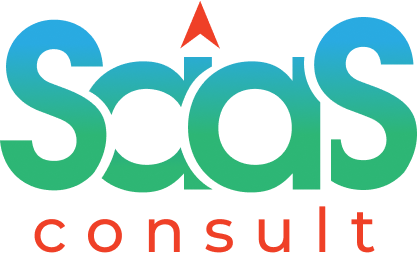The Power of Go-to-Market Strategy: Unleashing Success for SaaS Startups
Launching a Software-as-a-Service (SaaS) startup is an exciting journey filled with possibilities. However, in today’s competitive landscape, having a brilliant product alone is not enough. To drive success and growth, SaaS startups must master the art of Go-to-Market (GTM) strategy.
This comprehensive guide explores the essential elements of a winning GTM plan, providing actionable insights for SaaS founders to navigate their way to success.
1. Understanding Go-to-Market Strategy:
The first step in crafting a powerful GTM strategy is to understand what it entails. Go-to-Market strategy refers to the comprehensive plan and approach a company takes to introduce its products or services to the market, effectively target potential customers, and drive adoption. For SaaS startups, a well-thought-out GTM strategy is crucial to gain a competitive edge and achieve sustainable growth.
2. Conducting Market Research:
Before launching a SaaS product, thorough market research is essential. Start by identifying the target market and understanding their needs and pain points. Determine the specific problems your SaaS solution aims to solve and evaluate the demand for such a product. Analyze your competitors to uncover gaps in the market and identify areas where your product can stand out.
Additionally, understanding market trends and customer behavior can help in shaping the GTM strategy. Conduct surveys, interviews, and gather feedback from potential customers to gain valuable insights that will inform your product positioning and marketing efforts.
3. Defining Target Market and Ideal Customer Profile (ICP):
A critical aspect of GTM strategy is defining the target market and creating an Ideal Customer Profile (ICP). This involves creating detailed buyer personas that represent your ideal customers. These personas encompass demographics, interests, pain points, and challenges faced by your target audience.
By understanding your customers better, you can tailor your marketing messages and sales approach to resonate with their needs and preferences.
4. Crafting the Value Proposition:
The value proposition is the core message that communicates the unique value and benefits of your SaaS product to customers. A compelling value proposition articulates why your product is the best solution for your target audience’s needs. It should be concise, clear, and customer-centric.
To craft a strong value proposition, identify the key features and functionalities that set your SaaS product apart from competitors. Highlight how your product can save time, increase efficiency, or improve business processes for your customers. A strong value proposition is critical for capturing the attention of potential customers and differentiating your product in a crowded market.
5. Developing a Scalable Pricing Model:
Pricing is a crucial element of the GTM strategy. Your pricing model should align with your target market, the perceived value of your product, and your business goals. Consider different pricing structures, such as tiered plans, pay-as-you-go, or subscription-based models, to cater to the diverse needs of your customers.
Offering free trials or freemium versions of your SaaS product can also be an effective way to attract potential customers and allow them to experience the value of your product before committing to a purchase. As your SaaS startup grows, regularly evaluate and optimize your pricing strategy based on customer feedback and market dynamics.
6. Selecting the Right Distribution Channels:
Choosing the right distribution channels is essential for reaching your target audience effectively. For SaaS startups, digital channels are often the primary means of distribution. Consider leveraging your website, app stores, and online marketplaces to showcase your product.
In addition to direct distribution, partnering with resellers, affiliates, or complementary businesses can expand your reach and access new customer segments. Evaluate the pros and cons of each distribution channel, and select those that align with your target audience and business objectives.
7. Creating a Powerful Marketing Plan:
A robust marketing plan is key to driving awareness and generating leads for your SaaS startup. Utilize digital marketing channels such as Search Engine Optimization (SEO), content marketing, social media, email campaigns, and paid advertising to reach your target audience.
Content marketing, in particular, is a valuable strategy for SaaS startups. Create informative blog posts, eBooks, whitepapers, and webinars that address your target audience’s pain points and position your product as the solution. Share this content across various marketing channels to build thought leadership and attract potential customers.
8. Building a High-Performing Sales Team:
While SaaS products are often sold online, a well-trained sales team can still play a crucial role in driving sales and building relationships with potential customers. Consider hiring sales representatives with industry expertise who can effectively communicate the value of your product and address customer questions.
Define the sales process, set clear goals, and equip your sales team with the necessary tools and resources. Invest in a Customer Relationship Management (CRM) system to manage customer interactions, track leads, and monitor the sales pipeline.
9. Providing Exceptional Customer Support:
Customer support is a critical factor in customer satisfaction and retention. Prioritize providing exceptional support through various channels, including live chat, email, phone, and a comprehensive knowledge base.
Create a customer-centric culture within your SaaS startup and empower your support team to go above and beyond to assist customers. Gather feedback from customers and use it to continuously improve your product and services.
10. Measuring and Analyzing GTM Performance:
An essential aspect of GTM strategy is continuous improvement. Define key performance indicators (KPIs) to measure the success of your GTM efforts. These may include customer acquisition cost (CAC), customer lifetime value (CLV), conversion rates, and customer churn rate.
Utilize analytics tools to track customer behavior, engagement, and user interactions with your product. Analyze the data to gain insights into customer preferences, pain points, and areas for improvement. Use these insights to iteratively refine your GTM strategy and optimize your approach for better results.
Crafting a winning Go-to-Market strategy is vital for the success and growth of SaaS startups. By understanding the market, defining the target audience, crafting a compelling value proposition, and leveraging the right distribution channels and marketing tactics, SaaS founders can successfully launch their products and attract a loyal customer base.
Investing in customer support and continuously measuring and analyzing performance will ensure that your GTM strategy evolves and adapts to the changing market dynamics. With a well-executed GTM plan, SaaS startups can confidently navigate their way to success and carve a niche for themselves in the competitive SaaS industry.

